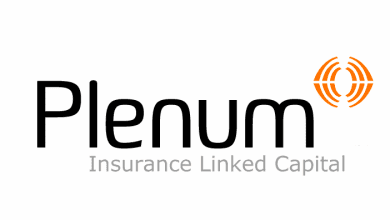Alignment critical in designing reinsurance sidecars for life insurers: RGA – Artemis.bm
When it comes to designing a reinsurance sidecar structure for a life insurer, ensuring alignment is strong across all parties involved is critical, while trade-offs between a sidecar strategy and simply trading with traditional reinsurers must also be assessed, according to RGA (Reinsurance Group of America).
Late last year, Reinsurance Group of America (RGA) announced the launch of a third-party life reinsurance sidecar company named Ruby Reinsurance Company (Ruby Re), which was supported for its launch by a number of third-party investors.
As RGA’s first life reinsurance sidecar, the company has learnings to share and executives from its Global Financial Solutions team have commented on the pro’s and cons of life reinsurance sidecars, and explained some of the challenges and trade-offs that must be assessed and overcome.
Adam Pyke, VP of Asset-Intensive, Global Financial Solutions, Libby Corcillo, VP of Business Development, Global Financial Solutions, and Brendan Akos, Executive Director and Transaction Manager, Global Financial Solutions, all detailed some of the issues potential life reinsurance sidecars need to be aware of.
They explain that, right now, reinsurance sidecars for the life sector are the “shiny new cars on the road”, with the ability to support growth and foster valuable partnerships for market participants.
But, sidecars can also be challenging, the executives say, with too many parties pulling in different directions a potential risk to their successful implementation.
“Ensuring alignment across stakeholders involves carefully designing all the features of the sidecar to ensure it runs smoothly,” they stated. “The associated resource allocation requires strong organizational commitment to the strategy; otherwise, getting through fundraising may be insurmountable.”
Which means the sidecar project must be assessed against the opportunity to transact reinsurance with an unaffiliated company, which for some can be a smoother and easier solution, while for others the sidecar may be the best option.
They note that, in many cases, life reinsurance sidecar strategies have been launched to help in de-risking while growing assets under management (AUM) to preserve fee income.
But there are other reasons to venture down the sidecar route, for life insurers, such as, raising capital to fuel growth, accessing more favorable offshore capital and tax treatment, lowering balance sheet and earnings volatility, and partnering with a specialise asset manager.
“Typically, an asset manager desiring a mandate for the sidecar’s assets will acquire a stake in the sidecar to reinforce alignment of interests. Beyond access to this AUM, the potential for high, stable returns over a defined period can attract various types of sidecar investors,” the RGA executives said.
Thoughtful consideration of design features is important when it comes to launching a life reinsurance sidecar, the RGA execs go on to highlight.
Aligning the different decisions on features a sidecar vehicle will have is key, as stakeholders involved have sometimes very different motivations for getting involved.
Sponsors want to maximise the economic value of the venture, through fees and ceding commissions, while also releasing capital, the RGA execs explained.
For the investors, it can be about deploying capital quickly and earning a high risk premium over a defined time horizon, while for some it is also about capturing lucrative asset management fees.
It’s important to also consider the regulators and align with them, to ensure there is no undue risk to policyholders.
“With precedents in place and a growing focus on the sidecar space, these stakeholders will be keen on influencing the design. Additional stakeholders, including employees, policyholders, advisors, and the parent company, will clearly want to have input on the sidecar design as well. The individual goals of all stakeholders should be considered as part of the design and decision-making process,” RGA’s executives further explained.
An awareness of the macroeconomic environment is also important, as financial conditions can also influence the performance and success of a life reinsurance sidecar project.
When comparing a sidecar to the opportunity in buying traditional reinsurance, the effort involved and the benefits must be weighed up, to select the right route for each sponsor.
A sidecar can be especially appropriate for companies with large balance-sheets, sophisticated capital management and capital markets expertise, with adequate risk to seed the structure, as well as the ability to commit to a continuous flow of risk to the structure over time, an appetite to work closely with investors and a management team that has the time and expertise to undertake such a project.
The RGA executives summarised and concluded, “While sidecars can deliver significant value under the right circumstances, the costs – whether in terms of time, resources, capital, or other elements – and execution challenges should be thoughtfully and realistically considered prior to pursuing.
“Early prioritization of objectives is essential in the development of the third-party capital strategy. This will inform the assessment of the notable trade-offs in pursuing the sidecar vs. other alternatives, such as traditional asset-intensive reinsurance.
“Following this process will ensure that you select the right car to get to your desired destination.”
Find details of numerous reinsurance sidecar investments and transactions, including life reinsurance sidecar structures, in our directory of collateralized reinsurance sidecar transactions.




